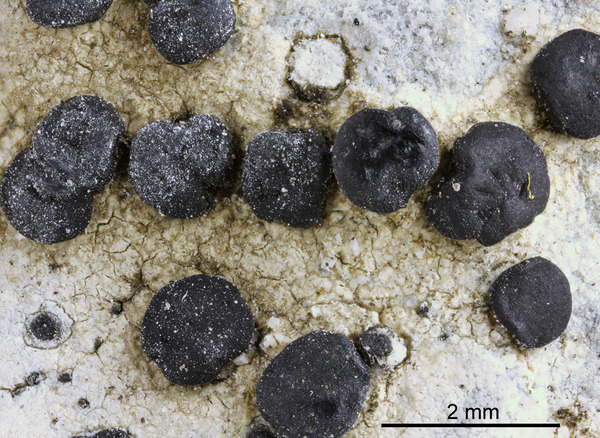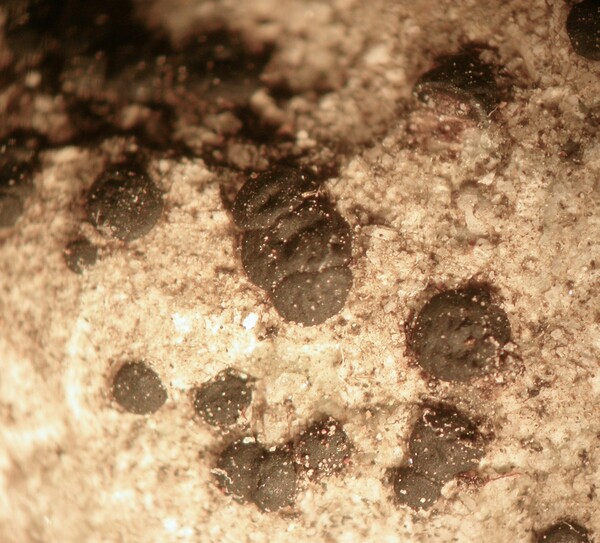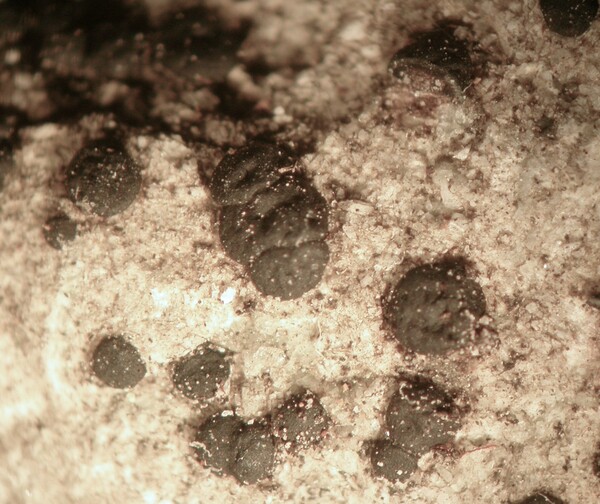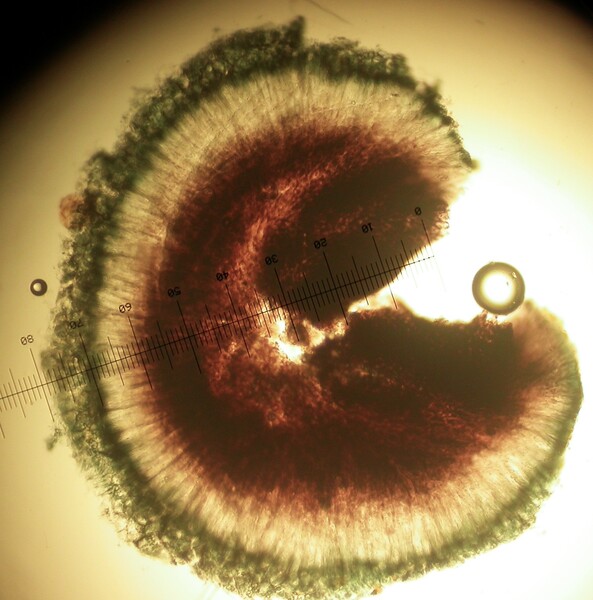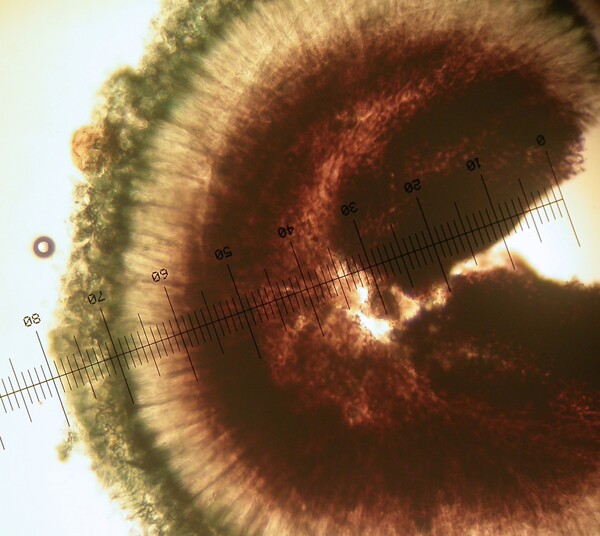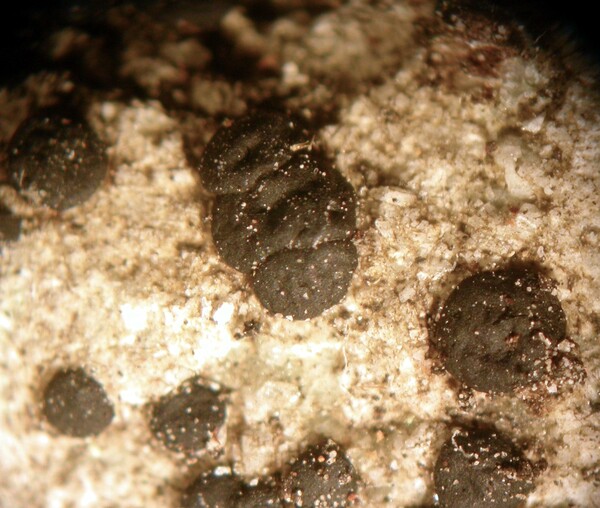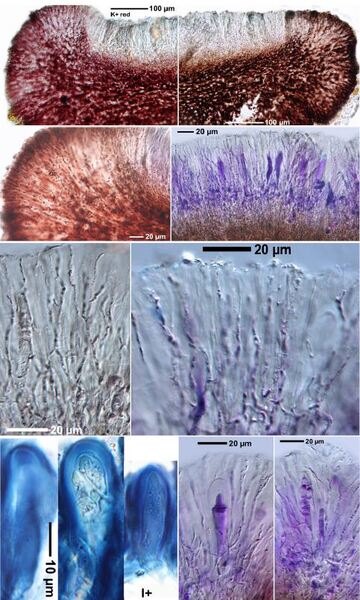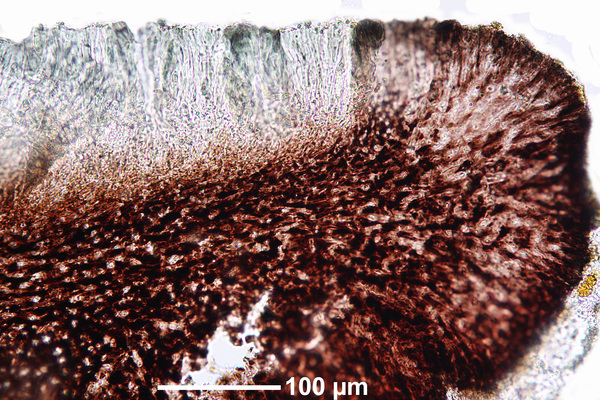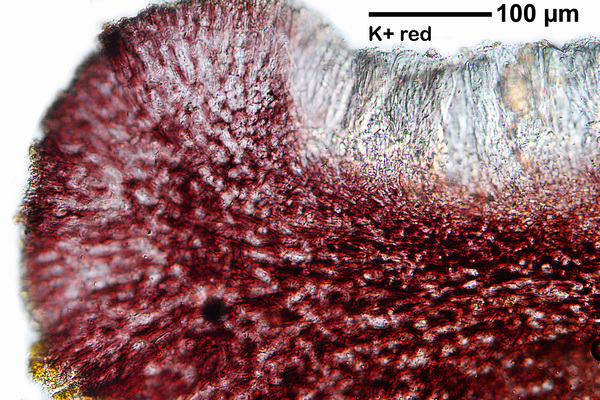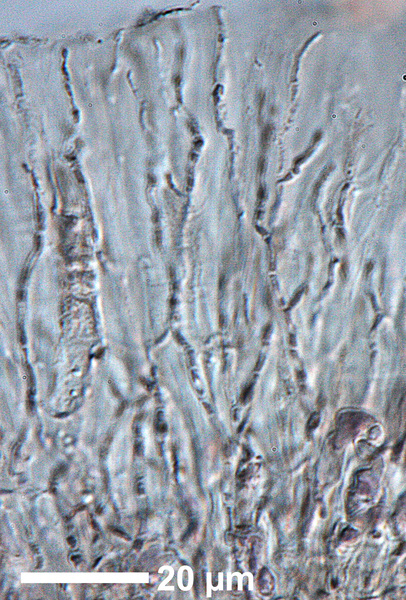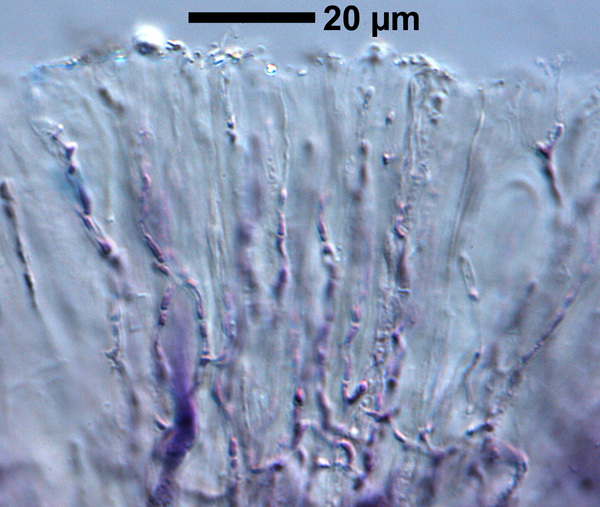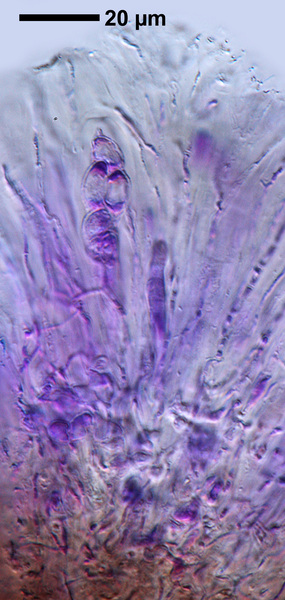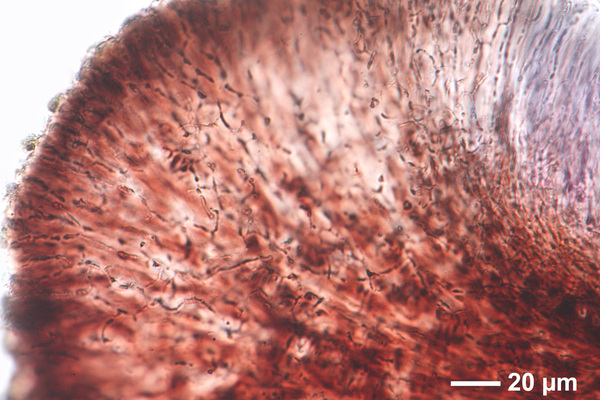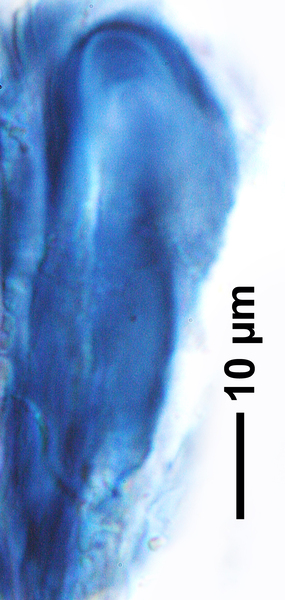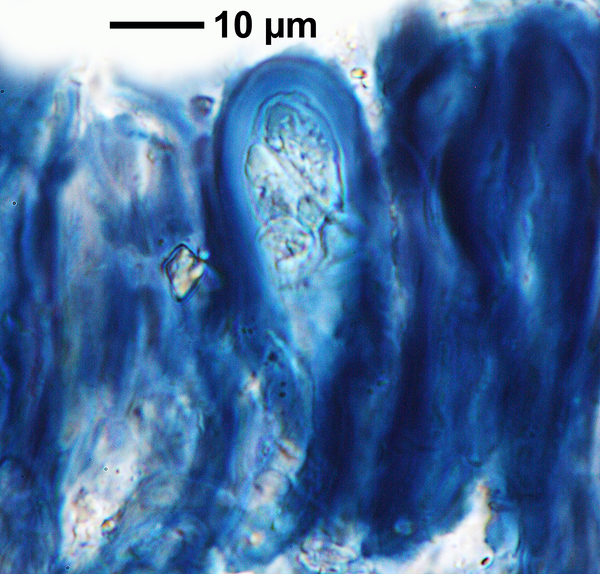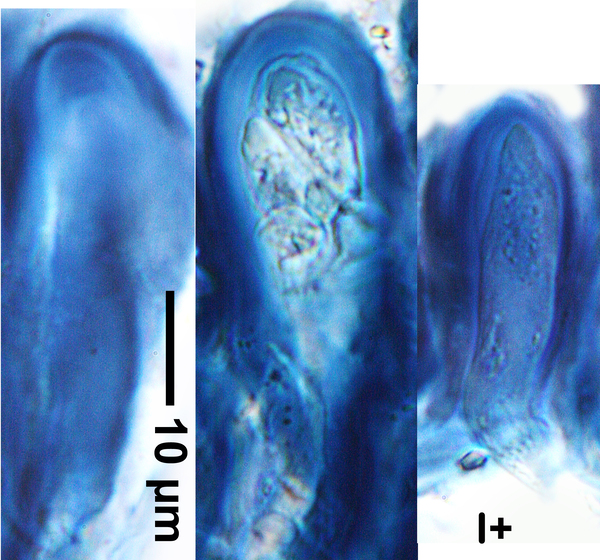Farnoldia hypocrita (A. Massal.) Fröberg var. hypocrita
Calc. Lich. Öland: 57, 1989. Basionym: Lecidea hypocrita A. Massal. - Symmicta Lich.: 53, 1855.
Synonyms: Biatora emergens Müll. Arg.; Haplocarpon lithospersum (Zahlbr.) M. Choisy; Lecidea dissipata H. Magn.?; Lecidea elata var. violascens Lynge; Lecidea jurana auct. ital. p.p. non Schaer.; Lecidea lithospersa Zahlbr.; Lecidea murina Ach.; Lecidea platycarpa var. apyospora A. Massal.
Description: Thallus crustose, mostly endosubstratic and pale blue-green, rarely thinly episubstratic, continuous to finely rimose and chalky white, without a distinct prothallus. Medulla white, mostly I+ pale blue. Apothecia lecideine, black, epruinose and somehow shiny, adnate and constricted at base, 0.6-2.5(-3.5) mm across, when young with a flat disc and a prominent, wavy proper margin, later progressively immarginate, with a strongly convex, cracked to cerebriform disc whose parts separate and sometimes give rise to new apothecia. Proper exciple thick, black in the thin outer rim, otherwise darker red-brown in inner part, paler in outermost part, K+ reddish violet; epithecium bright blue-green; hymenium colourless or blue-green in upper part, brownish in lower part, (50-)70-90 µm high; paraphyses strongly coherent, branched and anastomosing, 2-2.5 µm thick at mid-level, the apical cells to 5 µm wide; hypothecium red-brown, K+ reddish, darker than exciple. Asci 8-spored, clavate, with a I+ pale blue tholus and a central amyloid tube, approaching the Porpidia-type. Ascospores 1-celled, hyaline, ellipsoid with slightly pointed tips (lemon-shaped), 11-17(-21) x 5-9 µm, halonate at least when young. Pycnidia black, globose, immersed. Conidia bacilliform to slightly flask-shaped, 4-8 x 1.4-1.7 µm. Photobiont chlorococcoid. Spot tests: thallus K-, C-, KC-, P-, UV-. Chemistry: without lichen substances.
Growth form: Crustose
Substrata: rocks
Photobiont: green algae other than Trentepohlia
Reproductive strategy: mainly sexual
Subcontinental: restricted to areas with a dry-subcontinental climate (e.g. dry Alpine valleys, parts of Mediterranean Italy)
Commonnes-rarity: (info)
Alpine belt: rather rare
Subalpine belt: rare
Montane belt: very rare
Dry submediterranean belt: absent
Humid submediterranean belt: absent
Padanian area: absent
pH of the substrata:
1 2 3 4 5
Solar irradiation:
1 2 3 4 5
Aridity:
1 2 3 4 5
Eutrophication:
1 2 3 4 5
Poleotolerance:
0 1 2 3
Altitudinal distribution:
1 2 3 4 5 6
Rarity
absent
extremely rare
very rare
rare
rather rare
rather common
common
very common
extremely common
Loading data...
Occurrence data
Predictive map
Growth form: Crustose
Substrata: rocks
Photobiont: green algae other than Trentepohlia
Reproductive strategy: mainly sexual
Subcontinental: restricted to areas with a dry-subcontinental climate (e.g. dry Alpine valleys, parts of Mediterranean Italy)
Commonnes-rarity: (info)
Alpine belt: rather rare
Subalpine belt: rare
Montane belt: very rare
Dry submediterranean belt: absent
Humid submediterranean belt: absent
Padanian area: absent
pH of the substrata:
| 1 | 2 | 3 | 4 | 5 |
Solar irradiation:
| 1 | 2 | 3 | 4 | 5 |
Aridity:
| 1 | 2 | 3 | 4 | 5 |
Eutrophication:
| 1 | 2 | 3 | 4 | 5 |
Poleotolerance:
| 0 | 1 | 2 | 3 |
Altitudinal distribution:
| 1 | 2 | 3 | 4 | 5 | 6 |
Rarity
absent
extremely rare
very rare
rare
rather rare
rather common
common
very common
extremely common
Loading data...
Occurrence data
Predictive map


